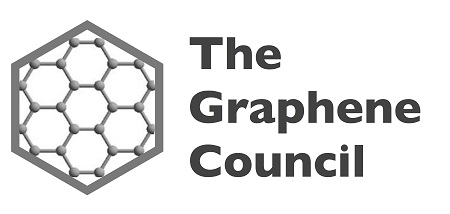
Image Credit: BONNINSTUDIO/Shutterstock.com
Graphene in transparent electrodes and RF transistors has become an attractive alternative in the move towards flexible electronics. Graphene is also becoming a more popular option in the production of memory devices. If flexible electronics are to be considered its own application area, it is interesting to consider the impact graphene could have in applications beyond its usual areas.
There have been claims for some time that flexible electronics will be the next highly successful product. Tech like rollable E-paper has been deemed a certain success by futurists but has yet to dominate or even generate interest in the market.
However, the widespread use of touchscreen displays in smartphones and tablets may prove to be a particular area of interest for flexible electronics. Various forms of graphene, like those used in functional inks, are likely to have a significant effect on flexible electronics, but CVD-based graphene can be used in flexible electronics too.
The applications most likely to be impacted by flexible electronics are:
- Transparent conductors
- Touch screen displays
- Organic light-emitting diodes (OLEDs)
- Photovoltaics
- Electronic paper
- Transistors
- Batteries and supercapacitors
While not all of these applications need to be flexible, as in the cases of photovoltaics, transistors, batteries, and supercapacitors, it is still interesting to investigate how graphene performs and competes in these varying areas.
Transparent Conductors
In order for flexible displays to work, it’s necessary to have flexible transparent conductors. A great number of materials have been looked into as a replacement for indium tin oxide (ITO) as a transparent conductor. All of these materials need high performance in their optical properties alongside their electrical conductivity.
Flexible Touch-Panel Displays
The minimum industry standards for transparent electrode materials in touchscreen displays is a sheet resistance of a few 100 Ω per square, and optical transmittance over 90 percent. With photovoltaics, the industry standards require a little more from the material, with a sheet resistance of 10 Ω per square with a transmittance of approximately 85%.
Mechanically exfoliated graphene films can achieve sheet resistance of 18 Ω per square and a high transmittance rate of 97.7% per layer, but CVD graphene is unable to improve on 200-400 Ω per square compared to ITO, that reach 10-30 Ω per square at a rate of 80 percent transmittance. ITO is also cheaper than graphene, which further discourages developers from utilizing the material.
There are claims that because graphene is still in its early stages development, it will in fact exceed the performance rates seen in ITO. However, this is not a certainty. The graphene capable of matching or exceeding these performance rates can only be produced mechanical exfoliation, an unscalable production method. For other production methods, like CVD, reaching that level of performance will take even longer.
Another obstacle is simply the cost of alternative materials to graphene. ITO is considered vulnerable as it becomes more scarce, its costs will rise. However, it is still cheaper than the high-quality graphene that is trying to compete in the market. Some question whether an increase in the economy of scale of graphene production would have detrimental effects on the quality of the graphene.
Additionally, graphene is not the only alternative to ITO in transparent conductors. These alternatives are also further along in the development process as a replacement for ITO, and some have achieved equivalent mechanical flexibility characteristics to graphene. As a result, the likelihood of graphene beating this competition is small.
Even so, the efforts to produce an alternative to ITO in transparent conductors in touchscreen displays remain, and Samsung has shown that it is possible with a touchscreen display using graphene as the transparent conductor. However, because of the technological hurdles Samsung has to overcome with these displays, as well as the market obstacles, it is not certain that Samsung has proved anything more than the concept can be achieved. Its marketability is yet to be proved.
It may be that the flexible electronics market has to progress beyond touchscreen displays and move into entirely new products based on the technology and the huge capital already invested in traditional ITO production facilities.
Flexible OLED Lighting
Graphene has been used in OLED lighting as an alternative transparent conductor material. While graphene has high charge carrier mobility, it does not possess high carrier concentrations. Because of this, improvements have to made in graphene’s overall performance as an electrode in OLED lighting applications. This improvement can usually be achieved by doping it to increase the number of available charge carriers, but this doping has to be carried out without sacrificing its high optical transparency.
In OLED devices, it’s necessary to have an efficient exchange of charge carriers between the active layer and the transparent electrodes. The active material and the transparent electrodes must bend together so that their electronic bands can modulate with one another. This facilitates fine-tuning the optoelectronic performance of the device.
Metal oxide film generally serves as the intermediate layers between graphene electrodes and the active material in OLEDs to ensure that the carrier flow and band are in alignment. In September 2018, an international research team including the Spanish CVD graphene producer, Graphenea, demonstrated the production of graphene-based OLED stacks possessing carrier exchange efficiencies exceeding those of standard ITO devices. This band engineering of graphene-based OLEDs, as well as other optoelectronic devices, could open the door for the use of graphene electrodes in these applications.
Flexible Photovoltaics
Flexible photovoltaics is another application for graphene in transparent conductors. Recent research suggests that CVD graphene transparent conductors can achieve sheet resistance of 230 Ω per square at 72 percent transparency. These numbers do not meet ITO’s 10 to 30 Ω per square at 80 percent transmittance, but solar cells manufactured with CVD graphene and ITO electrodes side by side on flexible polyethylene terephthalate (PET) substrates showed comparable performance characteristics, with power conversion efficiencies of 1.18 percent and 1.27 percent, respectively.
The solar cells made with the CVD-graphene electrodes do possess a superior capability to operate under bending conditions up to 138 degrees, but ITO-based devices developed cracks and permanent failures after bending to 60 degrees.
Flexible Transistors
Graphene has been considered an ideal channel material for (RF) transistors for a long time. An international research team including Nokia and Graphenea has produced flexible graphene transistors with a record high cut-off frequency of 39 GHz. The flexible graphene devices were made on flexible polymer substrates, allowing them to remain stable even after repeated flexing and bending.
It is predicted that these flexible RF transistors will form part of the flexible sensors used in wearable electronics. It will be necessary for these flexible sensors and devices to be able to communicate with each other, which will require an extra layer of flexible RF electronics.
The flexible graphene field-effect transistor was created with high quality, CVD-grown graphene with carrier mobility of ~2500 cm2 V-1 s-1 on a flexible Kapton substrate with a thin alumina dielectric spacer in the channel region. According to researchers, using such sophisticated and optimized materials results in record high frequency performance as well as stability against bending. The GFET continues to operate even after 1,000 bending cycles and can be flexed to a radius of 12 mm with a cutoff frequency shift of up to 10%.
Flexible Batteries and Supercapacitors
Graphene offers new features for energy-storage devices, from smaller capacitors and high-capacity and fast-charging devices to transparency. One of the most attractive properties graphene offers energy-storage devices like batteries and supercapacitors is flexibility that could make rollable or foldable devices a reality.
At present, all batteries and supercapacitors are rigid. Consequently, bending damages the cell and causes electrolyte leakage. Additionally, current energy storage technology depends on particulate-like energy storage materials, which cannot be bent without losing their mechanical integrity.
Graphene’s 2D structure is one atom thick and can withstand mechanical stress by deforming in the direction normal to its surface. This natural mechanical flexibility and its exceptional electrical properties and large surface area make graphene an attractive option for flexible energy storage devices.
Another area in which graphene is particularly applicable is inflexible energy-storage devices like stretchable supercapacitors and batteries. Graphene in this application is “wrinkled” graphene, and although wrinkles are normally a defect that is eliminated from graphene films, in energy-storage applications it provides additional surface area.
Stretchable electronics uses materials and devices capable of withstanding large deformations while maintaining normal function and reliability. It’s likely that these stretchable devices will find application in monitoring body functions and making portable electronics more comfortable to wear. Wrinkled graphene has even been used to produce supercapacitors that can be stretched up to eight times their length in materials that mimic the qualities of human skin.

This information has been sourced, reviewed and adapted from materials provided by The Graphene Council.
For more information on this source, please visit The Graphene Council.